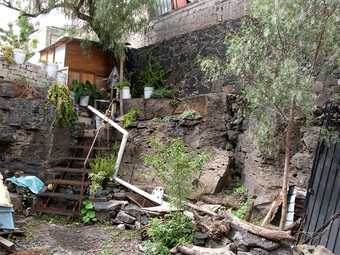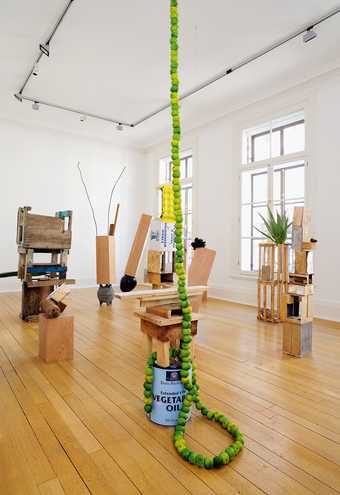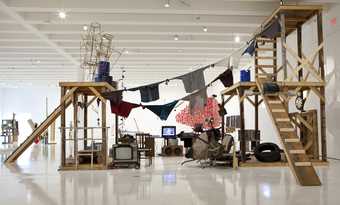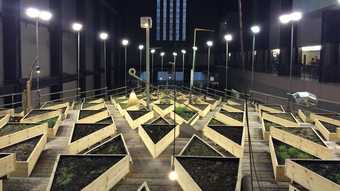Since 2007 Abraham Cruzvillegas has labelled many of his works ‘autoconstrucción’, which can be loosely translated as ‘self-constructing’. This is a reference to the building methods used in his home town of Ajusco, on the outskirts of Mexico City, where he continues to live and work. In the 1960s many people moved from the countryside towards the city, forming their own communities and makeshift homes out of whatever materials they could afford and upon what was thought to be uninhabitable volcanic land. It is this process of collaboration, the renewal of materials and improvisation that is integral to his work and will inform the new commission.
Fiontán Moran How would you describe autoconstrucción?
Abraham Cruzvillegas I think of my work, in a very general way, as the result of playing – almost in a childish manner – with found materials; attempting to produce some questions about how I arrived to be myself, why, and what for, and then giving to these questions a particular shape in space. At the end, very often the results are chaotic, like piles of things that speak very little about who I am, and more about where I am and who with. Some of these heaps are not only precarious (both physically and conceptually), but also very funny.
FM Seeing photographs of the autoconstrucción method in Mexico City, with buildings made of different materials upon volcanic rock, and plant life growing through cracks and crevices, creates a beautiful narrative about the lives of the people that made them. Did you ever consider the industrial nature of the Turbine Hall as another kind of difficult living space to be activated through your work?

View of buildings in Abraham Cruzvillegas’s home town of Ajusco, Mexico, 2009, photographed by the artist
© Abraham Cruzvillegas, courtesy the Walker Art Center, Minneapolis
AC As there’s no real ‘method’ for autoconstrucción, mostly because it’s all based on improvising, and as I have also seen plant life growing through cracks and crevices in London and in the streets of so-called developed countries’ cities, and not only in urban misfits such as shanty towns, favelas, villas-miseria, slums, banlieus, or other autoconstrucción relatives, I feel myself very familiar with the Turbine Hall. I feel at home in many ways. I hope at least some of the five million who visit there every year will have the same feeling during my intervention, but not only because of it.

Installation view of Abraham Cruzvillegas’s Autoconstrucción Room 2009 at Thomas Dane Gallery, London, with his Autoconstrucción 2 2009 in the foreground
FM When your Turbine Hall commission is on view, there will be a Gustav Metzger display at Tate Britain. While your work seems to be about creation rather than destruction, do you have a particular relationship with the questions proposed by the creator of auto-destructive art?
AC Metzger’s position as an activist and artist has been a big inspiration for me, so I deeply respect his work. For me, all construction implies some destruction, and in my case lots of self-destruction, and also reconstruction, all simultaneous, chaotic, delirious, inefficient and confusing – a kind of autoconfusión. So I still hope I can produce more questions about my own contradictory processes, about my conflicted relationship with my environment and my time.

Installation view of the exhibition Abraham Cruzvillegas: The Autoconstrucción Suites 2013, at Walker Art Center, Minneapolis
Courtesy of the artist and Thomas Dane Gallery, London, Kurimanzutto, Mexico City, Regen Projects, Los Angeles, Galerie Chantal Crousel, Paris
FM Throughout the duration of your commission, the new Tate Modern building will be nearing completion. Given your interest in construction and the renewal of materials, what do you feel about the changing nature of museums, or the development of London?
AC London is a city in constant transformation, as you can see by all the cranes and building activity. Many times I have wondered what happens to all those temporary elements used by construction workers, such as benches, stools, tables, fences, timber, beams, pallets and so on, after a building is finished. I love to think everything is recycled, having many lives, witnessing diverse experiences and situations, like the renovation of a museum, but maybe I’m wrong.

